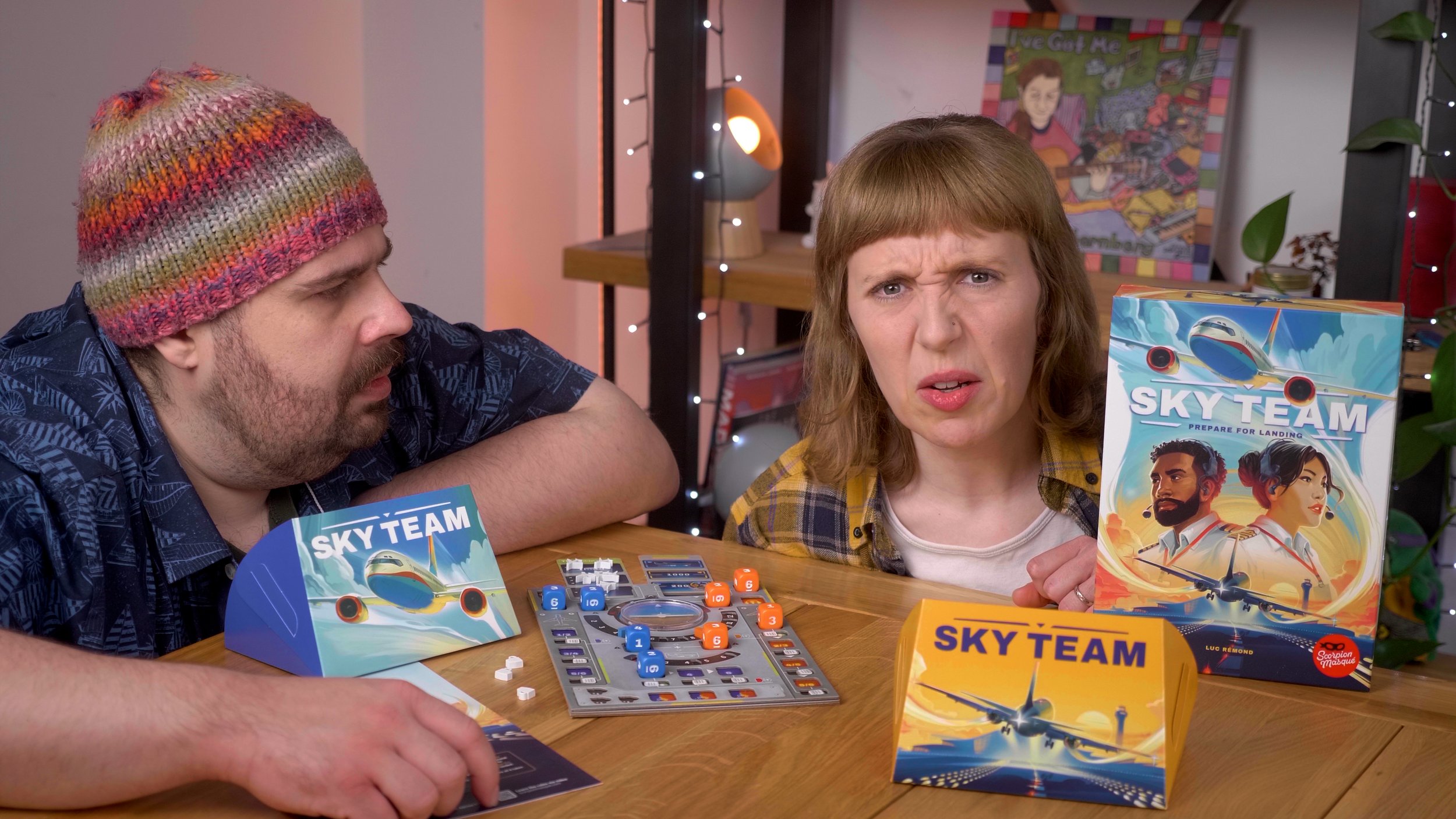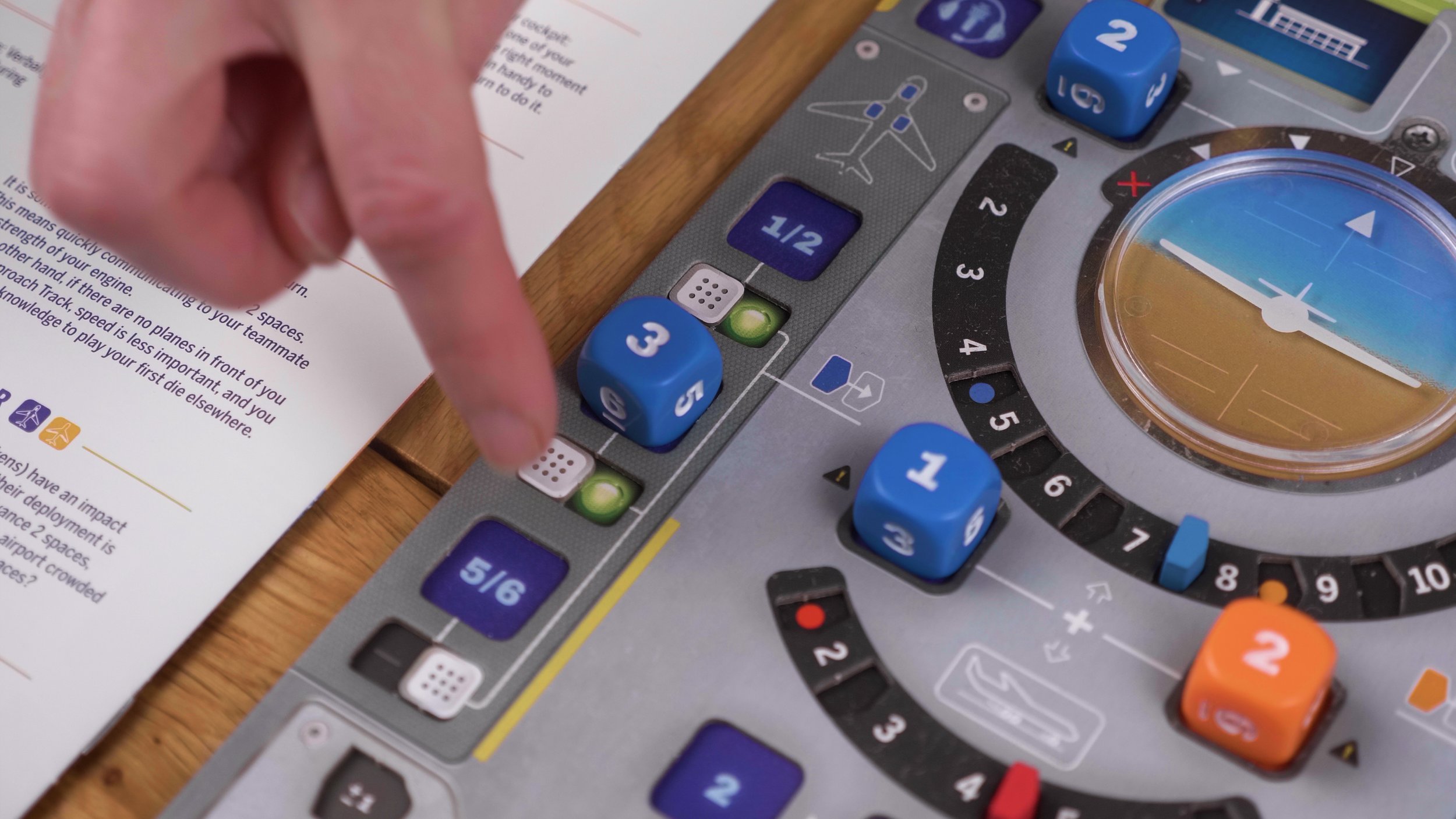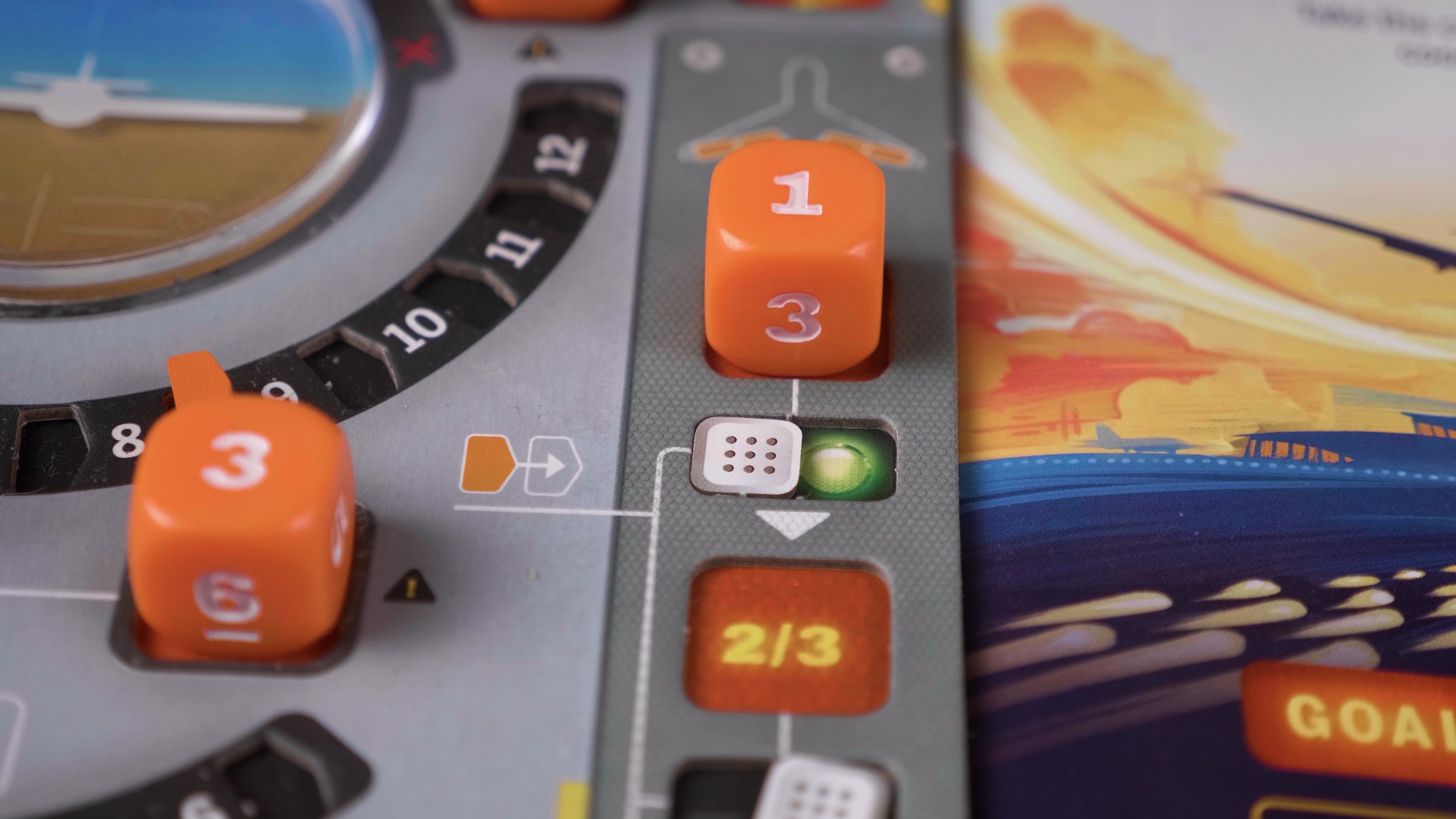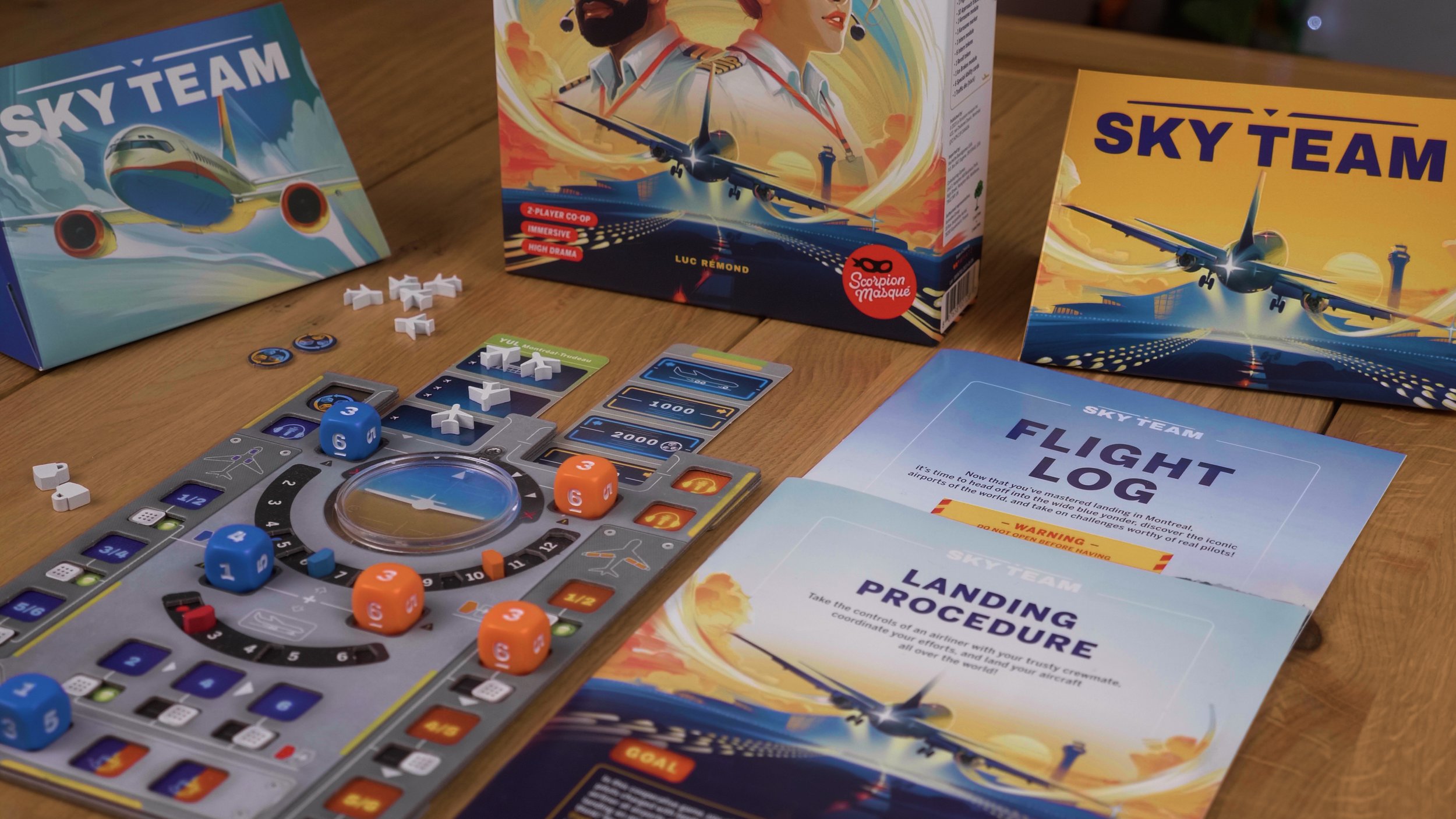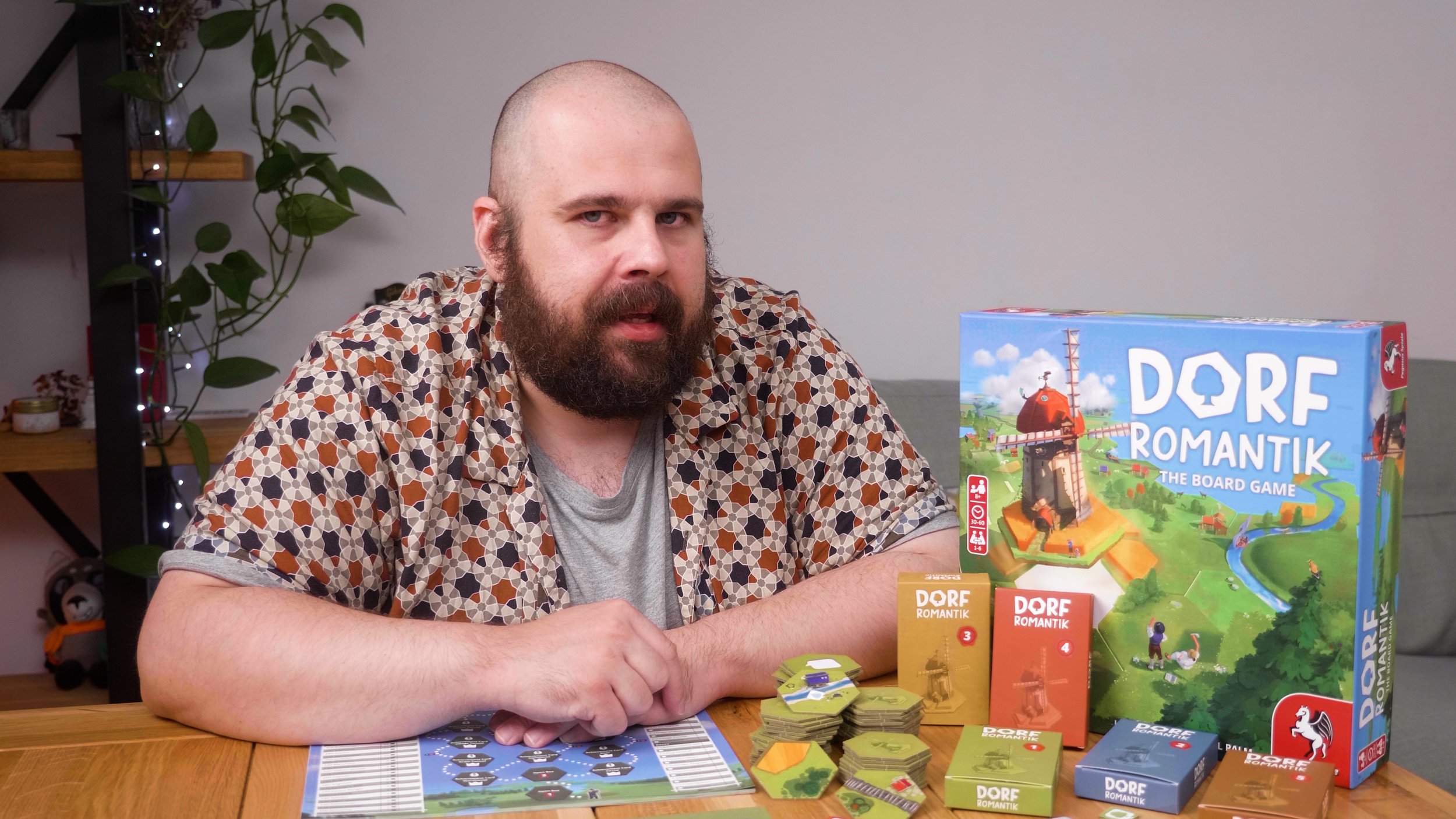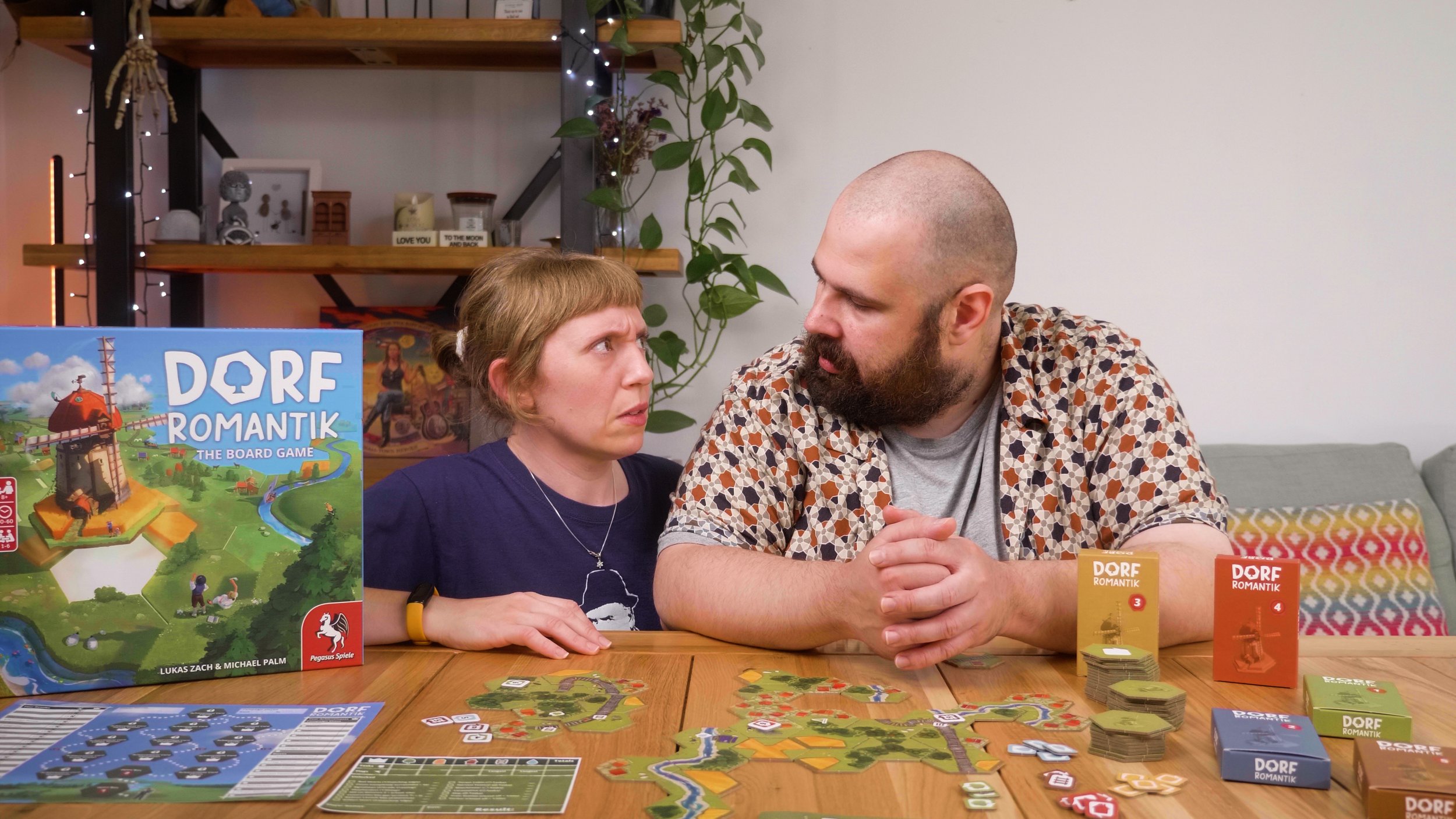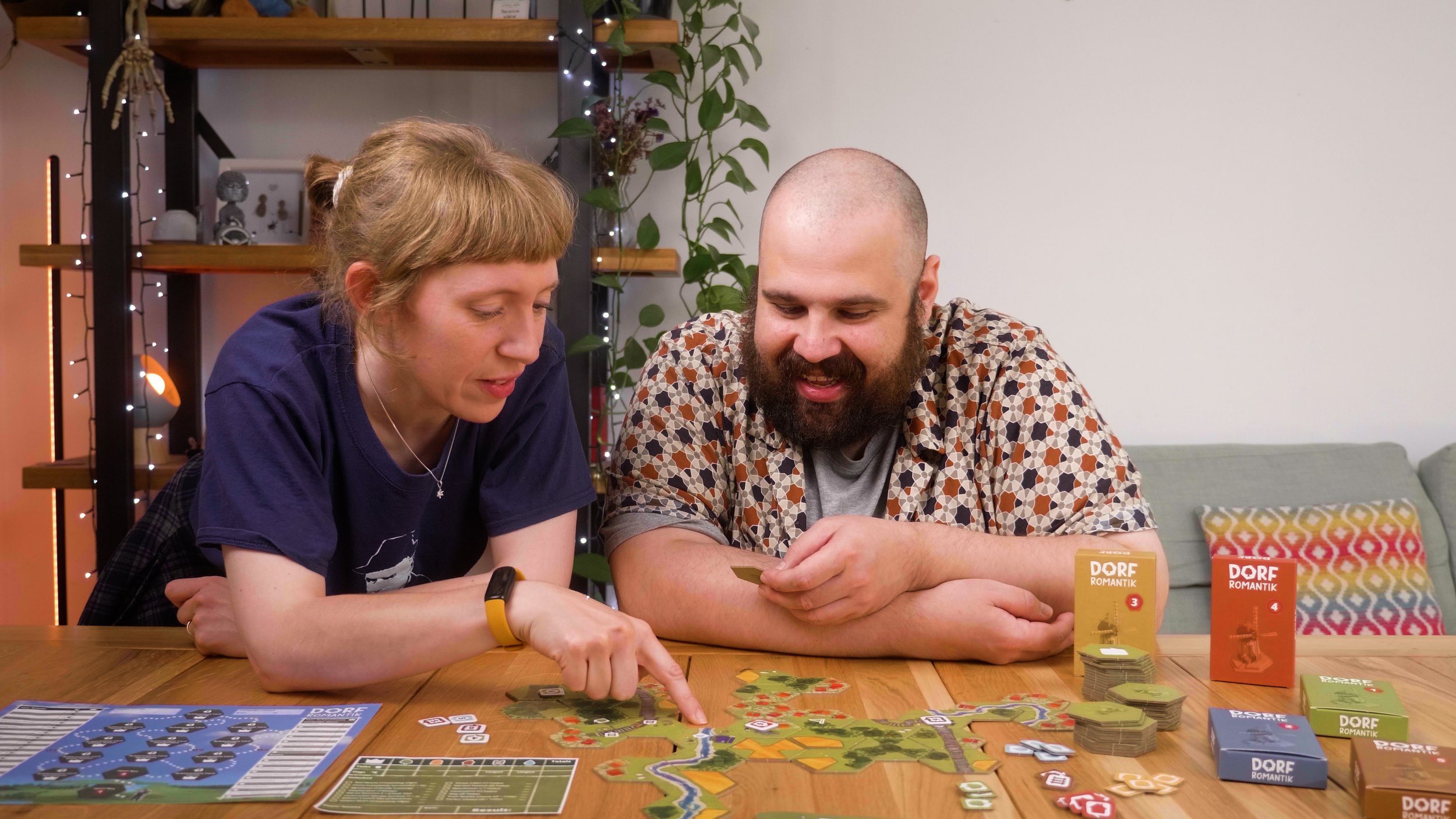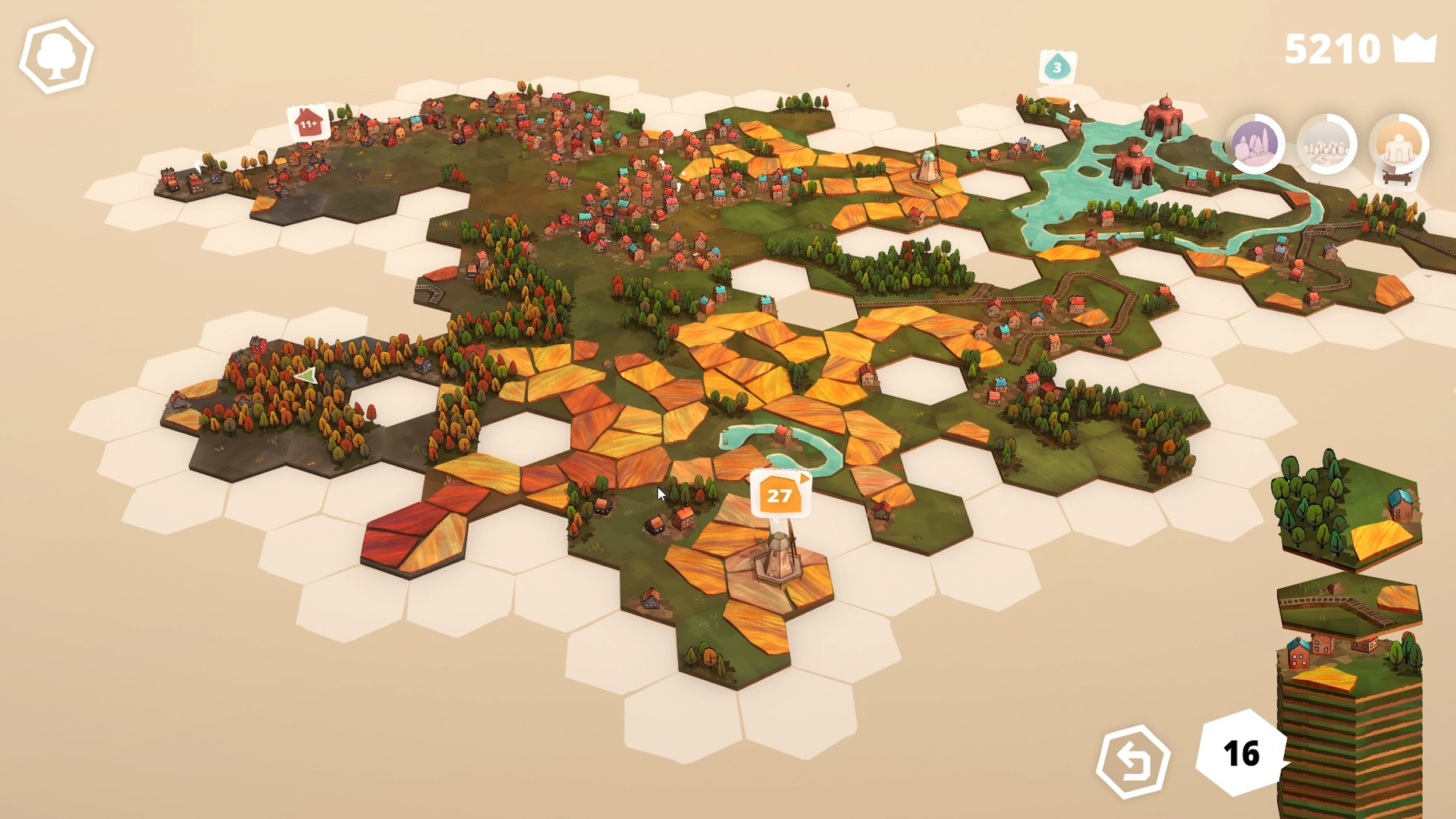Sky Team is So Tense, it Game Me Hiccups
The Crew, The Mind, Magic Maze and now Sky Team, each wonderful games that want you to sit down and shut up (ha ha). The premise is simple. Land a passenger airplane without talking. Isn’t that just the best pitch? We’ve all dreamed of being a pilot. Sky Team says - you can do that, without the ridiculous complexity of Flight Simulator and none of the dangers of real planing. Here’s our review.
What follows is a transcript of our video.
Sky Team asks a very simple question: have you ever wanted to land a passenger aeroplane? To which of course the answer is:
Elaine: NO! I don’t know the first thing about planing, I don’t want that kind of responsibility.
Efka: Relax, you’re not piloting an actual aeroplane, just a pretend board game one with dice. Let me show you how it works.
In Sky Team you and one other person will play as the pilot and co-pilot responsible for landing said aeroplane. You will do this by placing dice one at a time on this true to life accurate representation of a pilot’s dashboard.
There’s just one problem, just like in a real aeroplane, you’re not actually allowed to talk to each other. So that’s fun, but if that wasn’t enough, let me show you some other things you shouldn’t do.
Normally when we explain a board game, we like to start by telling you how you win, because that gives you context for what you’re trying to do. With Sky Team, I will instead be telling you how you lose.
This is the altitude track. It goes down by one at the end of every round.
If you haven’t reached the airport by the time it reaches zero - you crash and lose.
If you overshoot the airport at any point - you crash and lose.
If you don’t arrive at the airport before the last round - you crash and lose.
As you fly towards the airport, there will be other aeroplanes in the way. You and your co-pilot can shoot them down from the sky with this radio action. If you fly over any of them - you crash and lose.
Let’s say your aeroplane reaches the airport on the penultimate round. On the last round it needs to have a speed equal or lower to your brakes value. If it doesn’t – you crash and lose.
Let’s say your aeroplane reaches the airport on the penultimate round and on the last round your speed is lower than your break value but you haven’t perfectly balanced out your plane - you crash and lose.
Let’s say your aeroplane reaches the airport on the penultimate round and on the last round your speed is lower than your break value and you balanced out your aeroplane, but you haven’t deployed all your flaps - you crash and lose.
You haven’t deployed all your landing gear - you crash and lose.
You tilt your plane too far to either side - you crash and lose.
You flew through some clouds at the wrong angle - you crash and lose.
You ran out of fuel - you crash and lose.
You haven’t completely trained your intern - obviously that last one is fine, interns don’t really care about on the job training, they’re just doing it for exposure ARE YOU KIDDING ME, YOU CRASH AND LOSE.
Just one or two things for you to worry about as you’re not communicating with your team-mate. Unless, maybe you are.
As mentioned, each turn, one by one you’ll be placing one of the four dice you rolled at the beginning of the round.
You can place these dice anywhere you like, as long as the spot matches your dice colour – blue for pilot, orange for copilot – and the number restrictions. For example, I can only place a one or two here to deploy some of my landing gear. Each time you place a die, you perform the corresponding action.
That’s how you deploy brakes, landing gear, flaps, shoot other planes out of the sky, cross all the dots and i’s or even make some coffee.
Most actions are simple. Place a die, it does the thing. And when I say thing, nothing miraculous happens. If you radio to shoot a plane out of the sky, you just remove that plane. If you increase your brake value – well, you just increase your break value.
However. Two actions, balancing tilt and speed, are mandatory, and require a die from each the pilot and the co-pilot. Which means, two of the four dice you have, are spoken for every round. And that’s where communication comes in.
Let’s say it’s my turn and for my first die I put a 1 on the tilt action. If Elaine also puts a one, our tilt remains the same. If, however, she puts a higher die, such as a three, the tilt will move towards her equal to the difference. Tilt too far to one side - you crash and lose.
So me placing a one here is an outrageously brazen move! I have no idea what’s behind Elaine’s shield, it could be all fives and sixes in which case that’s an instant loss. But think about what I’m communicating with that one.
Because I placed it as my first move, I’m saying to Elaine, this is my problem die.
Elaine: Your face is a problem die.
Efka: It’s true. I haven’t got anything better for there, and if you haven’t got low dice you have four turns to figure out a solution.
I’m also saying, all my other dice are probably low too, so adjust your plans accordingly. Maybe send a die to the coffee space, which, like in a real aeorplane, makes coffee and adjusts die values by plus one or minus one.
And if worst comes to worst, we can always spend the very hard to come by reroll token.
I want you to think about how tense all these situations are in play. I said you’re not allowed to communicate, but I can bet you ten pounds no one’s going to stop themselves from a painful wince if someone places a two on tilt on their last turn when all you have behind your shield is a six.
Or the agony of deciding whether to use a reroll, which lets everyone reroll any dice they want, but you have two of these for the entire game.
And obviously you can’t confer when to use it. You just have to decide to use it. For both players. Whilst the other person is giving you a deadeye stare. And you just sit with that. And stew. I mean, forget hiccups. This game is so sweaty it legit gave me swamp butt.
What truly makes Sky Team a masterclass in board game design is that it knows how to de-escalate that tension in the most dramatic way.
Die by die, move by move, mind read by mind read you watch as you and your partner sync up and read each other and your plan is maybe, possibly, just about coming together.
Still in silence! Until that very last die placement where you’re finally allowed to high five each other and go OMG that was perfect! How did you know I still had a four behind my shield when you put a 3 down on speed?
Or the alternative to that, where someone makes one misstep, like the co-pilot forgetting that they need to shoot down an aeroplane and instead putting the die down to retract the flaps. And the mad silent scramble by both players to somehow find a fix before they literally cause an international catastrophe.
Last year everyone’s darling was Heat, a racing game that didn’t simulate racing, but high drama movies about racing.
Sky Team, along with obviously being a future mega-hit, does exactly the same thing. It simulates not actual aeroplane landings but movies about aeroplane landings.
You’re not playing a pilot, you’re playing Tom Hanks, Denzel Washington, maybe even Gerard Butler or Tom Butler.
Elaine: Who’s Tom Butler?
Efka: He’s the actor that plays the pilot in Snakes on a Plane.
Elaine: Oh. Why Snakes on a Plane?
Efka: Cause we needed a segue for the criticisms.
This isn’t gonna be long, don’t worry. My only real criticism is that Sky Team is incredibly precise and particular with the timing of actions. You move forward at the exact moment when someone places the second die on the speed action for example, not at the end of the round.
There’s a reason for that, it lets you set up more strategic moves. If you can’t shoot down the aeroplane that’s two spaces away because you’ve only got dice with like ones or sixes, you can move forward one space, and now your 1 die is eligible to take that enemy passenger plane DOWN!
But that sort of thing can be very fiddly during the portion of the game that has to play out without people talking to each other so when someone forgets - it’s tense, tense, TENSE… Oh wait you forgot to move your flap marker. No longer tense.
Aside from that, I mean, it’s a dice game where you roll dice and the values matter. So at easier difficulty levels, it’s tuned quite well towards that communicating without communicating action. Whereas with the really difficult scenarios, it’s just, did we roll the right dice? No. Okay. Let’s try again I guess?
Which isn’t really a criticism. Sky Team is an experience game. You can get better at it, but you don’t play it to get better at it. You play it for kicks, and let me tell you, this aeroplane’s got legs.
Also, don’t play this with strangers. In fact, don’t even play it with like acquaintances or co-workers or virtually anyone with whom you haven’t developed a level of comfort where you can just chill in each other’s company. Sky Team relies on intimacy to create that tension, so a disaster in the wrong hands.
But as long as we’re talking about scenarios, and as much fun as that base game is, this tiny box is a treasure trove of well thought out game-modes. From an intern you need to train, to fuel you have to manage to ice-breaks, wind - every module (aside from the hackneyed real time mode), offers an interesting spin to make sure that when you’re feeling comfortable with planing, it’s got another spanner to chuck in your face.
Try the intern module after your first game to vary it up a little bit, add the fuel module if you’re into players forgetting to do important actions and watching disastrous consequences unfurl in silence, and put on some ice-breaks when you really feel like taking things up a notch.
Sky Team is a top-notch recommendation from us. If your evenings are getting a bit stale and you’re bored of binge-watching streamers, inject a bit of swamp butt into your routine.
